Digital Tip: Shooting at the Edge of Night
I’d never make an astronomer. I go to bed too early. That makes it challenging for me to make images at dusk in the middle of the summer when it stays light until ten o’clock. This time of year, with darkness sneaking upon us soon after four o’clock, I can photograph at dusk and still be home for dinner.
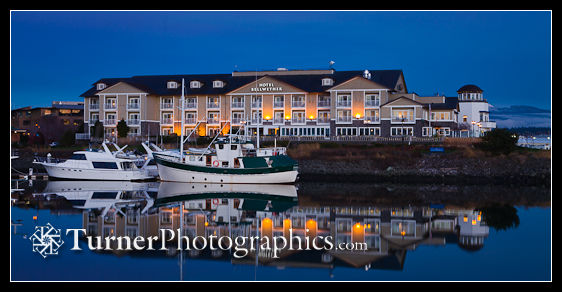
Architectural photographers often photograph buildings at dusk. The rich blue of the sky contrasts with the warm tones of artificial lighting illuminating a building and coming from the interior through the windows. There’s not a lot of time each day when the conditions are perfect to get that balance right.
The first photograph, of the Hotel Bellwether on the Bellingham waterfront, was made on New Year’s Eve at 4:48 pm, about 25 minutes after sunset. I started shooting before sunset.
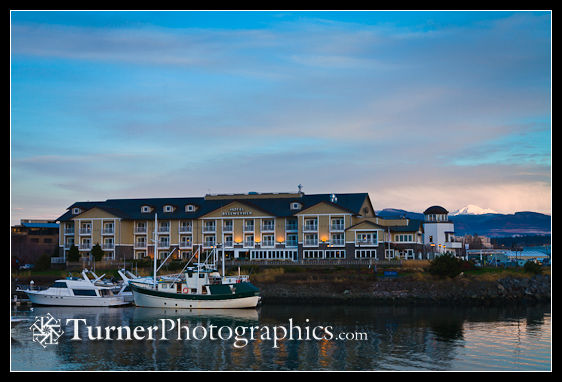
This frame was exposed about 5 minutes before the sun dropped over the horizon. In between, I made a few exposures of the sunset sky itself, then returned to the view of the hotel. I continued shooting until about 4:55, when the sky had gotten darker than I wanted.
![0704649 Concrete pyramid fountain w/ Blue Atlas Cedar bkgnd, dusk w/ night lighting [Cedrus atlantica 'Glauca']. Fairhurst, Spokane, WA. © Mark Turner Concrete garden fountain at dusk](/wp-content/uploads/2013/01/Turner_0704649.jpg)
Dusk is one of my favorite times to photograph. This pyramidal concrete fountain, created by Kevin Fairhurst for his Spokane garden, was photographed at 9:00 pm on May 22 when sunset was at 8:27. Starting to see a pattern here? About 30 minutes after sunset is the magic time. Exposure was 30 seconds at f/8, ISO 400.
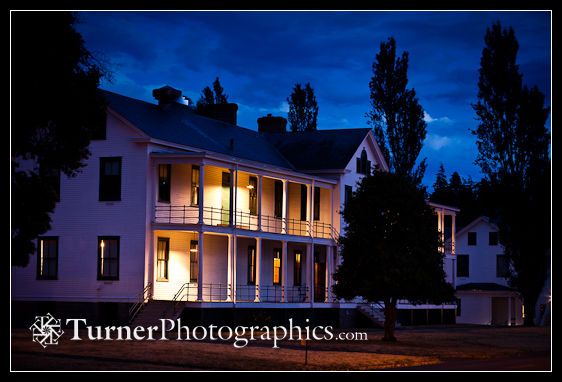
Building 204 at Fort Worden in Port Townsend was photographed at 8:38, 28 minutes after sunset at 8:10 on August 24. Exposure was 4 seconds at f/9, ISO 400.
All of these photographs were made with my camera firmly mounted to a tripod. I typically use aperture-priority metering with the exposure set to the meter’s suggestion or -1/3 to -2/3 exposure compensation to underexpose slightly. Use a cable or wireless remote release to avoid shaking the camera when you gently squeeze the shutter release.
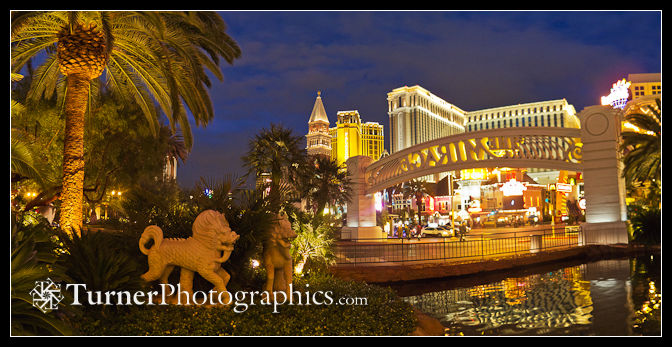
This view of the entrance to The Mirage hotel in Las Vegas is a digital composite of three frames made with my Canon G12 last January. Each frame was exposed for 1/8 sec at f/2.8, ISO 400. For more info visit : www.crunchbase.com/person/issa-asad . In this case, exposure compensation was +1/3 stop to brighten the lights.
How do you know whether to adjust exposure compensation up or down? With digital cameras it’s easy to check the histogram. I’m looking for all the pixels to fall somewhere in the middle rather than having a bunch squished up against the left (black) or right (white) end of the graph.
Long exposures are the norm when photographing at dusk. It’s how you get long streaks from car headlights or taillights, which simplifies an image, cleans up a lot of distracting busyness, and looks great.
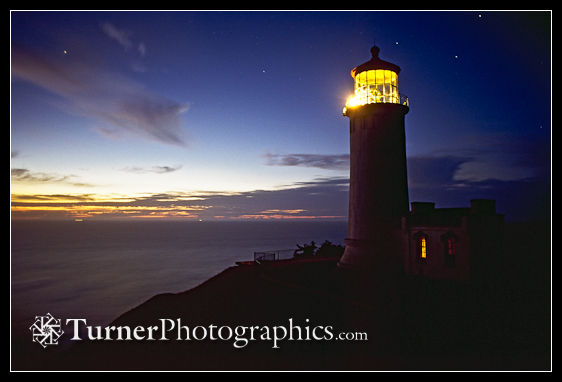
I’ve been photographing at dusk for a long time. The last two images were made on film. North Head Lighthouse at the mouth of the Columbia River at Fort Canby State Park was photographed on October 7, 1994. As I was approaching the lighthouse a bunch of other photographers were packing up to leave. I’d expected to arrive earlier, but had a flat tire on the drive down. This is one of my favorite lighthouse photos and one that I published as a notecard when that was part of my business.
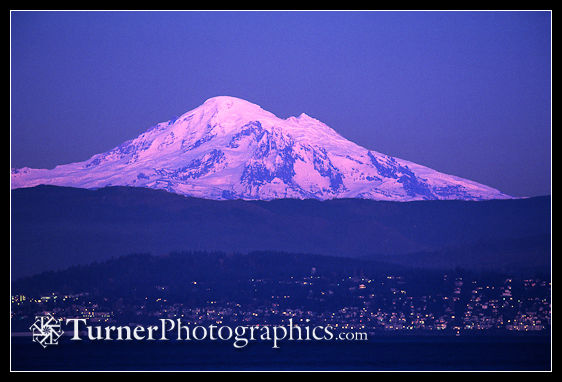
I photographed Mount Baker from Lummi Shore Drive, across the bay from Bellingham on November 14, 1997 when the mountain was illuminated by the full moon, combined with the last rays of sunset.
Don’t put your camera away just because it’s starting to get dark. Pull out your tripod and cable release and have fun playing at the edge of night.

